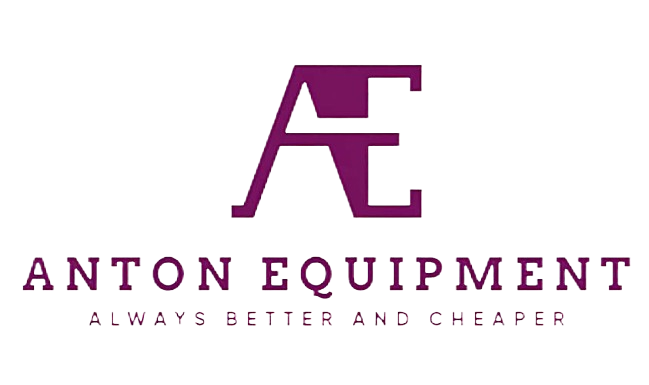News
Industrial-Grade Earthmoving Equipment for Challenging Terrains
Understanding Challenging Terrains in Heavy Construction
Soil Composition Analysis for Equipment Selection
Analyzing soil composition is crucial in selecting the right machinery for heavy construction on challenging terrains. Different soil types like clay, sand, and silt each pose unique challenges and should dictate equipment selection to optimize performance and safety. For instance, sandy soils may require machinery that can manage loose substrates, whereas clay-heavy soils may demand robust equipment to handle compaction. Understanding soil compaction levels is also vital, as it can significantly influence the stability of the machinery, making thorough soil testing imperative before beginning operations. Using scientific methods and tools, such as geotechnical survey equipment, can improve the accuracy of these assessments, leading to better decisions regarding rig selection and ensuring successful project outcomes.
Slope Stability Considerations
When operating heavy machinery on slopes, understanding the slope stability becomes paramount to ensure safety and efficiency. Identifying the angle of repose for different soil types provides critical data for the safe operation of equipment on uneven terrains. Additionally, implementing slope stability analysis methods, such as limit equilibrium models or numerical modeling, helps to predict and manage potential risks effectively. Awareness of external factors, including erosional processes and the impacts of rainfall, is crucial in preventing landslides during operations. Thus, incorporating weather-related assessments in planning ensures projects proceed without unexpected interruptions due to environmental conditions. These practices collectively enhance operator safety and project success in complex terrains.
Key Features of Industrial-Grade Earthmoving Equipment
Reinforced Undercarriage Systems
Reinforced undercarriage systems are essential features that enhance the durability and resilience of industrial-grade earthmoving equipment, particularly when operated on challenging and uneven terrains. These robust systems are designed to withstand harsh conditions, reducing the frequency of repairs and prolonging the lifespan of machinery. According to industry research, a well-designed undercarriage can significantly lower maintenance costs, making it a cost-effective choice for prolonged usage. By investing in equipment with a reinforced undercarriage, construction companies can ensure fewer downtimes and higher operational efficiency, crucial in competitive environments.
High-Torque Hydraulic Power Units
High-torque hydraulic power units are critical in providing increased digging power and lifting capacity, which are indispensable in demanding construction scenarios. These systems offer enhanced performance by delivering greater force, allowing equipment to handle more substantial loads and heavier materials with ease. Buyers comparing torque levels across various brands can make informed decisions by selecting machinery that aligns with their project needs. Access to comparative data and specifications allows companies to choose high-torque systems that optimize their productivity and meet specific construction requirements.
Mini Excavator Attachments for Precision Work
Mini excavator attachments are essential tools for conducting high-precision tasks in confined spaces, optimizing efficiency on smaller job sites. These attachments, such as grapples, buckets, and augers, enable operators to perform a variety of tasks, including digging, drilling, and lifting, with considerable accuracy and control. Analyses suggest that integrating specialized attachments can significantly boost project efficiency by reducing manual labor and allowing for more precise operations, ultimately leading to faster completion times and cost savings.
Skid Steer Attachments Versatility
Skid steer attachments offer notable versatility by enabling loaders to adapt to a wide range of applications, from grading and trenching to lifting and debris removal. The ability to interchange attachments makes skid steers highly adaptable, reducing the need for multiple machines on a construction site. This versatility not only shortens project timelines but also enhances productivity. By utilizing the appropriate attachments, contractors can perform tasks efficiently, thus maximizing the utility of skid steer loaders on diverse projects.
Hydraulic Breaker Applications in Rocky Surfaces
Hydraulic breakers are crucial when working on rocky surfaces, as they efficiently break through tough rock formations, enhancing operational efficiency. These powerful tools are pivotal in construction sites where breaking large stones is essential. Statistics indicate that hydraulic attachments significantly reduce time spent on difficult tasks, such as demolition and trenching, by delivering the force needed to break through hard materials swiftly, thereby streamlining project workflows and reducing labor costs.
Earth Auger Solutions for Drilling Operations
Earth augers are designed specifically for drilling precise holes, making them ideal for tasks such as post-hole digging and creating foundations. These tools are highly effective in operations requiring exactness and speed, particularly in less accessible locations. Market data suggests that earth augers can enhance site preparation efficiency by minimizing the need for manual labor. This not only expedites the drilling process but also reduces the risk of human error, ensuring that holes are drilled to the correct specifications consistently.
Quick Coupler Advantages in Attachment Switching
Quick couplers significantly enhance the efficiency of attachment switching, allowing for faster and safer transitions between different tools on construction equipment. This innovation maximizes machine uptime by reducing the time spent manually changing attachments. With quick couplers, operators can swiftly adapt to changing project needs, which leads to substantial time and cost savings on construction projects. By minimizing downtime, quick couplers enable seamless transitions between tasks, thus improving overall workflow and productivity.
Technological Innovations in Earthmoving Machinery
AI-Driven Terrain Adaptation Systems
AI-driven systems are revolutionizing how earthmoving machinery adapts to diverse terrain and soil conditions. These advanced systems enable equipment to adjust seamlessly to varying landscapes, enhancing operational safety and precision. Research demonstrates that integrating AI into machinery reduces human error, leading to improved efficiency and minimizing accidents. This alignment with the fundamental laws of physics allows machines to operate more predictably and safely, marking a significant step forward in heavy machinery innovation. Furthermore, incorporating AI-driven terrain adaptation systems not only improves performance but also optimizes resource utilization, ensuring projects are completed on time and within budget.
Autonomous Navigation for Hazardous Zones
Autonomous navigation technology is key for operating heavy machinery in hazardous and hard-to-reach zones, safeguarding operators by removing them from potentially dangerous environments. Reports from the industry highlight the growing trend of automation in heavy equipment, primarily driven by enhanced safety and operational efficiency. As more companies adopt this technology, machines can navigate challenging terrains more adeptly, ensuring timely completion of tasks with minimal human intervention. With autonomous systems, businesses can maintain productivity while adhering to stringent safety protocols, thus reducing project risks and boosting overall performance.
Maintenance Strategies for Extreme Operating Conditions
Dust and Debris Filtration Systems
In dusty and debris-laden environments, advanced filtration systems play a vital role in maintaining equipment longevity and performance. These systems prevent tiny particles from entering machinery, which could lead to mechanical failures and reduced efficiency over time. Research has shown that effective filtration can enhance engine life by as much as 30%, while also lowering maintenance costs [AISE, 2023]. By investing in robust filtration solutions, companies operating in harsh conditions can not only safeguard their assets but also ensure smoother and more reliable operations.
Enhanced Lubrication Solutions
Enhanced lubrication solutions are essential for equipment operating in extreme temperatures, ensuring smooth functioning and extending machinery lifespan. Utilizing the right lubricants tailored for specific conditions can significantly reduce wear and tear, thus lowering overall maintenance expenses. According to studies, proper lubrication can decrease friction by up to 40%, consequently reducing energy consumption and operational costs [Lubrication Institute, 2023]. By adopting advanced lubrication strategies, businesses can achieve higher efficiency and durability in their machinery.












































